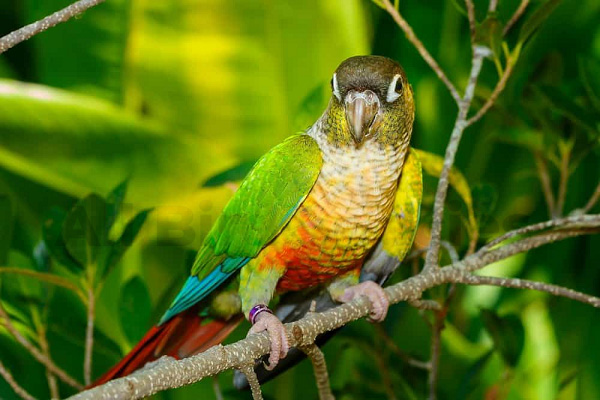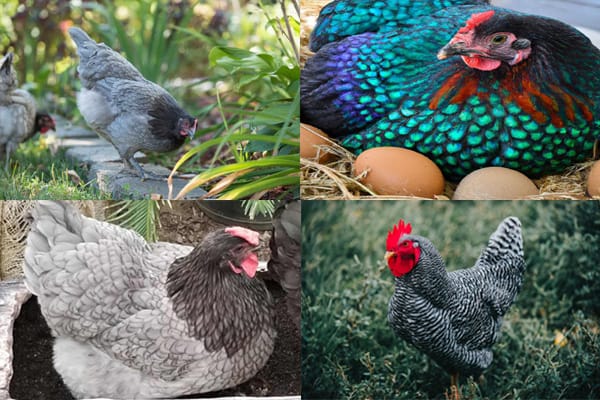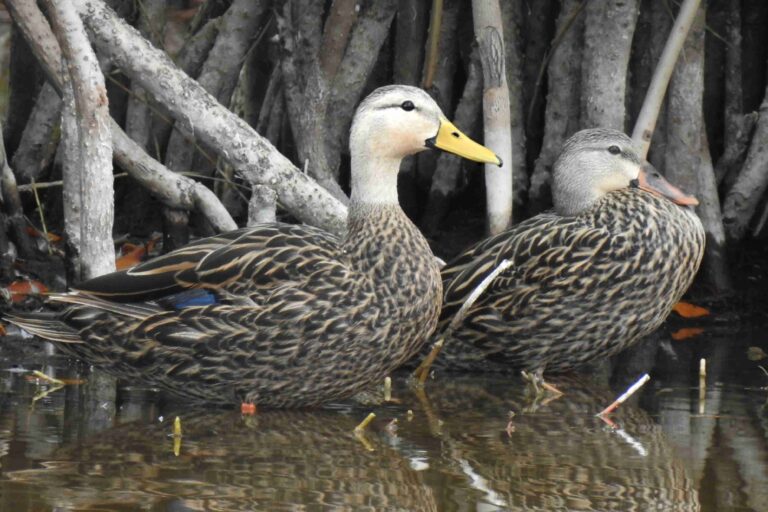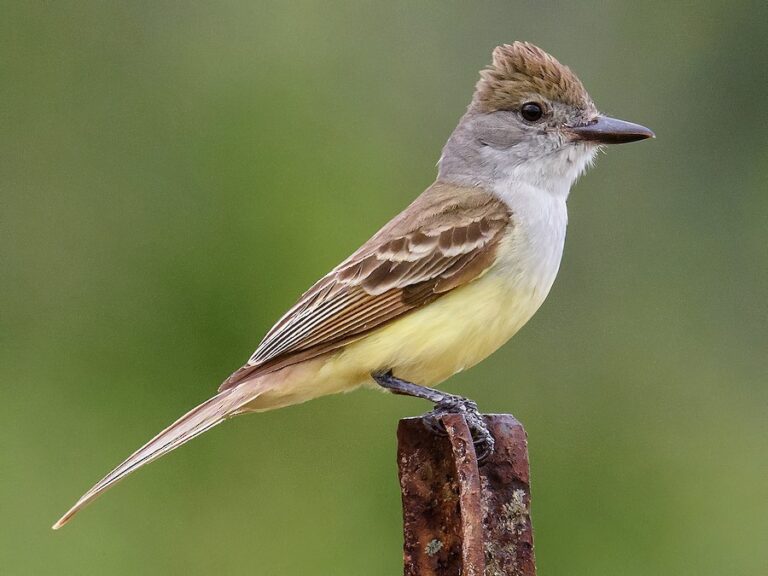Green Cheeked Conure Personality, Food, Care Guide [2024]
Are you thinking about bringing a green cheeked conure into your home? As an experienced bird caretaker, I can assure you that these charming and intelligent birds make excellent pets. However, to ensure a happy and healthy life for your feathered friend, it’s essential to provide proper care and attention.
In this comprehensive care guide, I will share valuable tips and advice on how to care for your cheeked conure. From their lifespan and behavior to their diet and enclosure requirements, I’ll cover everything you need to know to provide the best care possible for your avian companion.
Key Takeaways:
- Understand the behavior patterns and instincts of your green-cheeked conure for a better living experience
- Feed your conure a balanced diet consisting of fruits, vegetables, pellets, and treats
- Provide your conure with a spacious cage, perches, toys, and environmental enrichment to keep them entertained and mentally stimulated
- Regularly check your conure’s health and consult with a veterinarian if any symptoms arise
- Establish a strong bond with your conure through socialization, handling, training, and affection
Green Cheeked Conure Species Profile
As a green-cheeked conure owner, it is essential to understand the instincts of this bird species to create a healthy living environment that meets their specific needs. In this section, we will explore the origins, physical characteristics, and behavioral traits of the green-cheeked conure.
Origins
The green-cheeked conure is endemic to South America, specifically the southern region of Brazil, Bolivia, and Argentina. The species is classified under the Aratinga genus, belonging to the Psittacidae family.
Physical Characteristics
Green-cheeked conures are small to medium-sized birds, typically measuring 10-12 inches in length and weighing between 60-80 grams. They have green feathers with a distinct gray head and pale beak. Their eyes are dark brown, and their feet are zygodactyl, meaning they have two toes pointing forward and two backward, allowing them to perch easily.
Fun Fact: The green cheeked conure gets its name from the bright red feathers on its lower cheeks and throat.
Behavioral Traits
Green-cheeked conures are known for their affectionate and playful personalities, making them popular pets. They enjoy socialization and interaction, often seeking attention from their owners. These birds are intelligent and can learn tricks and mimic sounds with training. However, they can be stubborn, so training requires patience and consistency.
| Behavioral Traits | Description |
|---|---|
| Affectionate | Green-cheeked conures enjoy close contact with their owners
and often snuggle for warmth and comfort. |
| Active | These birds are highly active and require plenty of exercise
and stimulation to prevent behavioral problems. |
| Territorial | Green-cheeked conures can become territorial, especially during breeding season.
They may display aggressive behavior towards other birds. |
| Vocal | While not all green-cheeked conures can mimic speech, they are known for
making a variety of noises, including screeches, chirps, and whistles. |
By understanding the instincts and behaviors of the green-cheeked conure, you can create an environment that meets their specific needs and helps them thrive as pets.

Green Cheeked Conure Diet and Feeding
As a responsible pet owner, providing a nutritious and well-balanced diet is essential in maintaining the health of your cheeked conure. Their diet should consist of a variety of fresh fruits and vegetables, fortified pellets, and occasional treats.
Fruits and Vegetables: Offer a daily variety of fresh, washed, and sliced fruits and vegetables, such as bananas, berries, apples, oranges, carrots, broccoli, and kale. These provide a rich source of vitamins, minerals, and fiber.
Pellets: High-quality pellets should make up at least 70% of your conure’s diet. Look for pellets that contain essential nutrients, such as Vitamins A, D, and E, calcium, and omega-3 fatty acids.
| Pellet Brands for Green Cheeked Conures | Price Range | Where to Buy |
|---|---|---|
| Harrison’s Adult Lifetime Coarse | $6.99-$119.99 | Petco, Chewy.com, Amazon |
| Roudybush Daily Maintenance | $9.99-$99.99 | PetSmart, Walmart, Amazon |
| ZuPreem FruitBlend with Natural Fruit Flavors | $11.69-$62.99 | Petco, Chewy.com, Amazon |
Treats: Offer occasional treats, such as seeds, nuts, and dried fruits. These should be limited to no more than 10% of their daily diet and should be used for training or as a reward.
It’s important to avoid high-fat and high-sugar foods, such as human junk food, avocado, chocolate, coffee, and alcohol, as these can be harmful or toxic to your conure.
Feeding schedules and portion sizes will vary depending on the age, size, and activity level of your cheeked conure. As a general rule, provide fresh food and water daily, and monitor their intake to ensure that they are maintaining a healthy weight. Do not let your conure overeat, as obesity can lead to a variety of health issues, including liver disease, respiratory problems, and decreased lifespan.
Must Read: Largest Birds of Prey
Green Cheeked Conure Cage and Environment
As a bird lover, ensuring that your green-cheeked conure is comfortable and secure in its living space is crucial. Creating an ideal environment that promotes physical activity and mental stimulation is an important aspect of keeping your pet healthy and happy. Here are some essential tips for you to consider when setting up your green-cheeked conure’s cage:
Cage Size
The size of your cheeked conure’s cage is important, as it determines the amount of space your pet has to move around and play. The minimum recommended size for a cage is 18 x 18 x 24 inches, but a larger cage is always better. A spacious cage will give your bird room to stretch its wings and fly, which is important for its physical well-being.
Perches and Toys
Providing a range of perches, made of different materials, such as wood and rope, can help keep your bird’s feet healthy and prevent sores. Perches should be of varying diameters to exercise the feet and prevent muscle fatigue. Your bird will also benefit from a variety of toys, which will help keep them mentally stimulated. Wooden toys, ropes, and bells are great examples of toys that will keep your bird entertained.
Environmental Enrichment
A natural environment is important for your green-cheeked conure, so make sure to include natural elements in their cage such as branches, logs, flowers, and other safe natural elements to create a visually appealing environment. Place your pet’s cage near a window or in a room with natural light to enhance their view of the environment and access to fresh air. Fresh air is important, but ensure that the cage is not placed in a draft or an area with temperature fluctuations that could be potentially harmful.
By following these simple tips, you can provide your cheeked conure with a comfortable and stimulating environment, promoting optimal health and well-being.
Green Cheeked Conure Health and Common Issues
As a responsible pet owner, it’s vital to be aware of the common health issues that can impact your cheeked conure. By understanding these issues and how to prevent and manage them, you can help your bird stay healthy and happy for years to come.
Proventricular Dilatation Disease (PDD)
PDD is a viral disease that affects the digestive system of birds, including green-cheeked conures. Symptoms may include weight loss, vomiting, and regurgitation. There is currently no cure for PDD, so prevention is essential. Avoid contact with infected birds or their droppings, and practice good hygiene when handling your pet.
Psittacine Beak and Feather Disease
This viral disease affects the growth of feathers and beaks, leading to abnormal development, feather loss, and weakness. Unfortunately, there is no cure for Psittacine Beak and Feather Disease, but vaccination can help prevent it. Ensure that your bird has regular check-ups with a veterinarian to spot any issues early on.
Psittacosis
Also known as “parrot fever,” Psittacosis is a bacterial infection that can cause respiratory problems, fatigue, and fever in birds and humans. Green-cheeked conures are susceptible to this disease, so it’s essential to practice good hygiene and disinfect your bird’s cage regularly.
Beak Malocclusion
Beak malocclusion is a common issue in green-cheeked conures, where the upper and lower parts of the beak don’t align correctly. This can cause difficulty eating and grooming the bird. A vet can help by trimming or shaping the beak.
Regular Veterinary Check-ups
Schedule regular check-ups with a veterinarian who has experience with avian pets. They can perform routine inspections, monitor your bird’s health, and provide guidance on any concerns you may have.
| Common Health Issues | Symptoms | Prevention & Management |
|---|---|---|
| Proventricular Dilatation Disease (PDD) | Weight loss, vomiting, regurgitation | Avoid contact with infected
birds, practice good hygiene |
| Psittacine Beak and Feather Disease | Abnormal feather growth,
feather loss, weakness |
Vaccination, regular
check-ups |
| Psittacosis | Respiratory problems, fatigue, fever | Practice good hygiene,
disinfect regularly |
| Beak Malocclusion | Difficulty eating and grooming | Trimming or shaping the
beak with a vet |
By keeping an eye out for these common health issues, you can ensure your green-cheeked conure lives a long and healthy life. Remember to schedule regular check-ups with a veterinarian to stay informed and proactive about your bird’s well-being.
Green Cheeked Conure Behavior and Training
As with any pet, understanding the behavior patterns of your cheeked conure is key to building a strong and positive relationship. To do this, you will need to invest time in training them effectively.
Socialization is a crucial aspect of your conure’s behavior, as it will impact their ability to develop strong bonds with you and other humans. It’s essential to provide them with ample opportunities to interact with different people and other pets in a safe and controlled environment.
Handling is another vital component of training. You will need to teach your conure how to step up onto your hand, as well as how to maintain balance while perching on your arm or shoulder. Patience and consistency are key when it comes to handling training.
Cognitive stimulation is essential to keep your conure’s mind active and healthy. Encourage them to explore new toys, puzzles, and food puzzles regularly. Not only will this provide them with mental stimulation, but it will also help prevent destructive behaviors such as feather plucking.
Teaching your conure basic commands such as “step up,” “down,” and “stay” is also critical. Positive reinforcement is the best way to train them effectively, and small rewards such as treats or verbal praise will go a long way in encouraging good behavior.
Techniques to Foster a Strong Bond and Positive Interaction with Your Conure
Building a strong and positive relationship with your conure takes time and patience. Here are some tips to help you achieve this:
- Spend time with your conure daily, providing them with opportunities to interact and play with you.
- Use a calm and soothing voice when talking to your conure.
- Respond to your conure’s vocalizations and body language to better understand their needs and emotions.
- Offer treats as positive reinforcement and to show affection.
- Experiment with different toys and activities to find what your conure enjoys the most.
By understanding your conure’s behavior patterns and investing time in training, you can foster a positive and meaningful relationship with them.
Green Cheeked Conure Talking Abilities
Do you dream of having a bird that can talk back to you? While not all cheeked conures can mimic speech, those who can are capable of learning simple words and phrases. They are known to be quite chatty and are capable of surprisingly clear vocalizations.
One factor that affects a cheeked conure’s talking ability is their age. Generally, younger birds (under 6 months old) are more trainable than older birds. However, with patience and consistent training efforts, older birds can also learn to speak to some degree.
Tip: Start by teaching your conure short and simple phrases that you can repeat often. Consistency is key to retaining their vocabulary, so practice regularly.
Another factor that influences their talking ability is their personality. Just like people, birds have unique temperaments that may affect their willingness to learn or communicate. Some may be more vocal and interactive than others, so don’t be discouraged if your green-cheeked conure isn’t a chatterbox.
Encouraging Vocalization
If you want to encourage your cheeked conure to talk, provide them with frequent interaction and cognitive stimulation. Talk to them often throughout the day and use the words that you want them to learn. You can also play recordings of repetitive words or phrases to help them practice.
In addition to verbal communication, provide your conure with toys that encourage vocalization, such as bells or whistles. This will help them develop their vocal skills while also providing mental stimulation and entertainment.
Green Cheeked Conure Breeding and Reproduction
If you’re considering breeding green-cheeked conures, there are a few things to keep in mind to ensure a successful breeding experience. First, make sure the birds are healthy and in peak condition. This means providing a nutrient-rich diet, regular exercise, and maintaining a clean environment.
When it comes to nesting requirements, green-cheeked conures prefer a wooden nest box that is at least 12 inches in diameter. Softwood shavings or mulch should be used as a lining, and the box should be placed in a spot that is quiet, dark, and away from any disturbances. The female will lay 4-6 eggs, which will hatch in around 24-26 days.
| Breed Characteristics | Requirements |
|---|---|
| Nest box size | At least 12 inches in diameter |
| Nest box lining | Softwood shavings or mulch |
| Incubation period | 24-26 days |
| Chicks weaning age | 6-8 weeks |
After hatching, the chicks will remain in the nest for around six to eight weeks before they’re ready to be weaned. During this time, ensure that the nest box is clean and that the chicks receive proper nourishment. Once the chicks have been weaned, they can be moved into a separate cage with other birds of similar ages.
It’s important to remember that breeding green-cheeked conures can be a lengthy and involved process. You’ll need to dedicate time and effort to provide your birds with the necessary care and attention, so be prepared for the commitment before embarking on the journey.
Green Cheeked Conure Lifespan and Care
If you’re planning to keep a green-cheeked conure as your pet, it’s important to understand the lifespan of these birds and how to provide the best possible care to maximize their longevity.
The lifespan of a green-cheeked conure is around 10 to 15 years in captivity, although they can live up to 20 years if provided with excellent care, proper nutrition, and regular exercise.
Dietary Considerations
One of the most crucial aspects of caring for your cheeked conure is ensuring they have a balanced and nutritious diet. Fresh fruits and vegetables, along with high-quality pellets, should make up the bulk of their diet. Avoid food that is high in fat, sugar, and salt, as this can lead to health issues for your bird.
Regular Exercise
Your green-cheeked conure needs regular exercise to stay healthy. Allow them to fly and move around freely outside their cage for at least an hour every day. Providing them with toys to play with and perches of different sizes can also keep them entertained and mentally stimulated.
Mental Stimulation and Enrichment
Green-cheeked conures are intelligent and social birds. Engage with them regularly by talking to them, teaching them simple tricks, and providing them with mental stimulation and enrichment. This can help prevent boredom and behavioral issues.
Green Cheeked Conure Price and Availability
Green Cheeked Conures are relatively affordable, with prices ranging from $200 to $500, depending on factors such as age, color mutation, and availability. While you can find Green Cheeked Conures for sale at pet stores, we recommend seeking out reputable breeders who prioritize the health and well-being of their birds.
When purchasing a Green Cheeked Conure, it’s crucial to ensure it comes from a responsible and knowledgeable breeder. Look for breeders who provide ample space, a varied diet, and opportunities for socialization and exercise. Ask for references and recommendations and do your research beforehand to avoid purchasing from disreputable sources.
| Pros | Cons |
|---|---|
| Green Green-cheeked conures are affordable
compared to other parrot species. |
The initial cost of purchasing a Green Cheeked
Conure may be a financial burden for some. |
| Green Green-cheeked conures are widely available
for purchase from pet stores and breeders. |
Purchasing from an irresponsible breeder
or pet store can result in bringing home an unhealthy or improperly socialized bird. |
| There are various color mutations to choose from,
allowing potential owners to pick a bird that fits their personality and aesthetic preferences. |
Green Cheeked Conures require a significant financial
and time commitment for their care and upkeep. |
Overall, the price and availability of Green Cheeked Conures make them a popular choice for both novice and experienced bird owners. With proper research and preparation, owning a Green Cheeked Conure can be a rewarding and enjoyable experience.
Tips for First-Time Green-Cheeked Conure Owners
Congratulations on becoming a green-cheeked conure owner! As a first-timer, it’s natural to feel overwhelmed. But don’t worry, with these tips, you’ll be on your way to providing the best care for your feathered friend.
Bonding with Your Conure
Building a strong bond with your conure is essential in establishing trust and creating a happy relationship. Spend time talking to your bird, offering treats, and providing toys for them to play with. Slowly introduce physical interaction such as head scratches and gentle petting.
Setting up a Routine
Green-cheeked conures thrive on routine, so it’s important to establish one early on. Set consistent times for feeding, playtime, and bedtime. This will help your bird feel secure and comfortable in their new environment.
Building Trust
Trust is fundamental in maintaining a healthy relationship between you and your conure. Take things slowly and watch your bird’s body language. Understand their likes and dislikes, and never force them to do something they’re uncomfortable with.
Creating a Safe Environment
Green-cheeked conures are active and playful birds that require a safe space to explore. Make sure your bird’s cage is the appropriate size, and provide toys, perches, and other environmental enrichment to keep them mentally and physically stimulated.
Proper Nutrition
A well-balanced diet is essential for the health and well-being of your conure. Offer a variety of fruits, vegetables, pellets, and occasional treats while monitoring portion sizes. Consult with your veterinarian for dietary guidelines and recommendations.
Veterinary Care
Regular veterinary check-ups are crucial in ensuring the health of your conure. Schedule annual exams with an avian veterinarian to monitor any potential health issues and ensure your bird is up-to-date on vaccinations.
By following these tips, you’ll be on your way to providing a happy and healthy life for your green-cheeked conure. Remember to always prioritize their physical and mental well-being and enjoy your new feathered friend!
Wrapping Up…
In conclusion, owning a green cheeked conure can be a rewarding and fulfilling experience. By following the care guide and tips provided in this article, you can provide your feathered friend with the best possible environment to thrive. It’s important to prioritize their physical and mental well-being by providing a balanced diet, a stimulating and safe living space, and regular health check-ups.
Remember that owning a bird is a long-term commitment, and their lifespan can extend up to 30 years with proper care. Developing a strong bond with your green-cheeked conure takes time and patience, but it’s worth the effort to have a cheerful and affectionate companion in your life.
Whether you are a first-time owner or an experienced bird enthusiast, always be sure to research and learn about the specific needs and traits of the green-cheeked conure. By doing so, you can ensure a rich and fulfilling relationship with your beloved bird for years to come.






